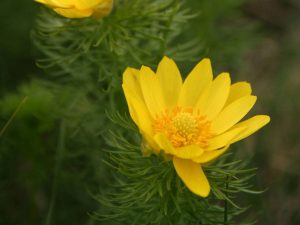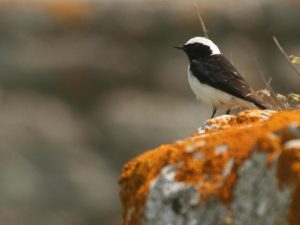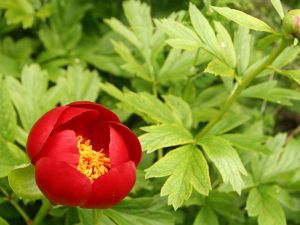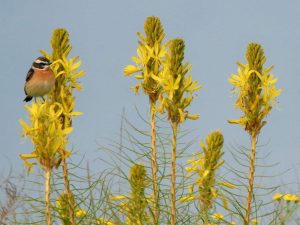
spring on the Black Sea coast
Spectacular displays of spring flowers, with bird migration at its peak along the Via Pontica.
Download leaflet
Dates
To be confirmed
Leader
To be confirmed
Price
To be confirmed
Included
Return flight London Heathrow to Varna. Local transport as specified in itinerary. Seven nights accommodation, full board.
Not included
Refreshments. Gratuities. Travel insurance. ETIAS/visa costs. Covid tests and associated costs.
Group size
Minimum 5, maximum 14.
This trip will take in some of the highlights of the Bulgarian Black Sea coast, an area amazingly rich in wildlife.
In the south we will take in the lakes and wetlands around Bourgas. Here we will find many wetland birds, including Squacco Heron, White and Dalmatian Pelican, Pygmy Cormorant and Spoonbill. Northbound migrants should include all three marsh terns in smart breeding colours; Red-footed Falcon, Honey Buzzard and Lesser Spotted Eagle, sometimes in large flocks; both White and Black Stork; and a variety of waders heading up to the wetlands of Scandinavia, Poland and Russia.
This corner of Bulgaria is amongst the richest areas in Europe for reptiles and amphibians, and we will be joined by a local expert to help us track down some of the area’s specialities, perhaps including the beautiful Leopard Snake or Reddish Whip Snake and two species of tortoise.
During our time in the north we will spend time on the flower-rich steppe around Cape Kaliakra, where a staggering 450 species of plants include splashes of red Paeonia tenuifolia, yellow Adonis vernalis, and carpets of abundant dwarf irises in a range of shades of purple and yellow. In this area we have a better chance than almost anywhere in Europe of catching sight of a Wild Cat.
This area is famous for several breeding birds with very restricted ranges in Europe, and we hope to find Pied Wheatear, Paddyfield Warbler, Levant Sparrowhawk Sombre Tit and Semi-collared Flycatcher all on their breeding territories.
Download trip report
Please note that holidays change, although sometimes only slightly, from year to year and previous trip reports may not reflect the planned itinerary, or other holiday details, for the current trip. Please ask us if you would like to know of any significant differences.
Day 1 Our fight takes us to Varna on the Black Sea coast from where we transfer to our hotel, just over an hour away.
Day 2 We spend today exploring Cape Kaliakra and the nearby steppe, an area famous for its wonderful displays of wild flowers. Nesting birds include Calandra Lark, Isabelline Wheatear and Stone Curlew, while the area is also home to a healthy population of both Golden Jackal and Wild Cat: fingers crossed!
Day 3 We visit the archaeological reserve of Yailata, a mysterious clifftop site with more than 100 troglodyte dwellings from the 5th century BC. The clifftop grassland is home to many wild flowers, including several local endemics, Pied Wheatear nest amongst the rocks, while out to sea we hope to spot Yelkouan Shearwaters low over the waves. Among the steppe we have a chance to spot the endearing Souslik, their colonies watched over by whistling sentinels.
Day 4 We explore the lakes in the north of Bulgaria. At Lake Durankulak we will be greeted by a cacophony of Savi’s, Reed and Great Reed Warblers, and Marsh Frogs. Migration should be in full swing, with flocks of White-winged Black Tern, Whiskered Tern and Little Gull feeding over the reeds, and Red-footed Falcon heading north. We also visit Lake Shabla, where Ferruginous Duck, Squacco Heron and Ruddy Shelduck may be amongst the highlights.
Day 5 A travelling day takes us south towards Burgas. On the way we stop in the forested foothills of the Eastern Balkan Range. Semi-collared Flycatchers nest in specially provided nestboxes in the oak woodland, and the boxes are also used by Forest Dormouse. The woods are also home to Wild Boar, Red Squirrel and several species of woodpecker. North-bound, passing migrants could include Lesser Spotted Eagle, Honey Buzzard and Red-footed Falcon, both White and Black Storks, White and Dalmatian Pelicans, and small numbers of Pallid and Montagu’s Harriers.
Day 6 We spend today around the internationally important wetlands in the Burgas area. Chief amongst the attractions for us will be both European species of pelican, Pygmy Cormorants and large colonies of Purple and Squacco Herons, Spoonbill and Glossy Ibis, as well as a variety of waders and wildfowl. Great Reed Warblers sing from the reeds while White-tailed Eagle and Marsh Harriers soar overhead, and we will hope to find Broad-billed Sandpiper and Slender-billed Gull during the day.
Day 7 This corner of Bulgaria is noteworthy for its reptiles and amphibians, with some local specialties restricted in Europe to here and nearby Turkey. Today we will try to track down some of these special animals: Blotched Snake, Meadow Lizard and Eastern Slow-worm are all possible, as well as two species of tortoise, and European Glass Lizard. Although reptiles are a focus of our day there should be plenty of wild flowers and birds to enjoy.
Day 8 Today we have to retrace our steps, heading north back to Varna. If time allows, we will make one or two visits along the way to look out for north-bound birds and other wildlife, before we head to the airport and our flights home.
Please note that the itinerary may be changed to suit the weather or other practicalities at the discretion of the leaders.
Our accommodation will be at good three-star local hotels, all with en-suite accommodation, with our time split between the coastal town of Kavarna, and the outskirts of the city of Burgas.
Meals provided during the stay will be a mixture of Balkan and International dishes, with an emphasis on local cuisine and plenty of salads. Requests for special diets can be accommodated.
We will travel by minibus or smaller vehicles if necessary.
Group flights
Group flights are with with Austrian Airlines from London Heathrow to Varna.
Overland travel
You can reach Bulgaria by train from the UK. From London you can reach Sofia in two nights, with sleeper trains available. Contact us to find out more, and to make your holiday flight-free.
Time zone
Bulgaria is two hours ahead of UK time.
Entry requirements
If you hold a British passport you can travel to countries in the Schengen area (including Bulgaria) for up to 90 days in any 180-day period without a visa. Your passport must be issued less than ten years before the date you enter the country and valid for at least three months after the day you plan to leave.
Starting in 2026 British passport holders will need to apply for the ETIAS European Travel Authorisation to visit Schengen countries. This must be applied for online prior to travel, at a cost of €7 (free for over 70s). Once granted, your ETIAS will be valid for three years.
The weather in Bulgaria should be pleasantly warm, even hot: rain is always a possibility, as is cooler weather, particularly in the evenings and on the coast.
On most days, we are walking for much of the day, albeit at a relatively slow pace. It is necessary to walk on rougher ground and up some (gentle) slopes, although none of the walking is strenuous. Good (light) walking boots are essential. All walks and excursions are optional.




